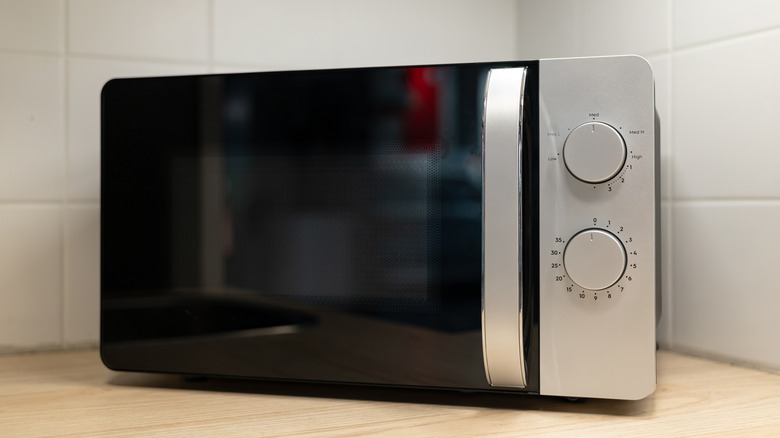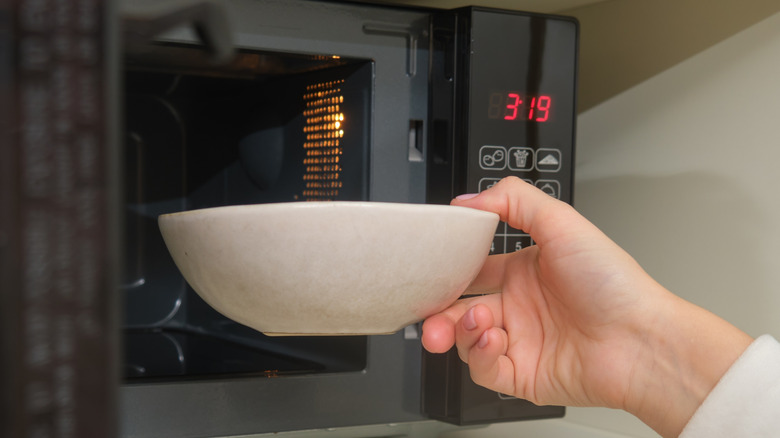The Microwave Blunder That Can Cause A Major Kitchen Disaster
Maybe you wanted to check it was working right or maybe you just hit the button without thinking — either way, you've run your microwave with nothing inside and now it's fully given up. Although it sounds pretty harmless, running your microwave when it's empty is a common microwave mistake that can end in disaster for your trusty kitchen appliance. Unlike food-related blunders such as microwaving hot peppers or cooking shrimp in the microwave, using your device when it is empty can cause the machine to develop technical issues and even poses a serious fire risk.
In most cases, it won't cause any serious damage. You'd usually have to run your microwave on empty for more than five minutes to cause irreversible issues and, chances are, you'd probably spot that the chamber was empty long before that. But, if you do somehow let your microwave run for longer than this while empty, what does it actually mean for your machine?
Due to the way that microwaves heat food, running one when empty can cause a fuse to blow or, at worst, the microwave to overheat. It is when they are overheated that microwaves have the potential to start a fire.
Why does running an empty microwave damage it?
Microwaves heat food by sending electromagnetic waves around the chamber — these vibrations create heat and warm up molecules in the food being prepared. If the microwave runs when empty, there is nothing inside the chamber to absorb these waves, meaning that the magnetron (which produces the waves) can start to overheat. Some microwaves have a built-in safety fuse that will trip if this happens, causing your machine to lose power. You'll need to get a professional out to replace this fuse as doing it yourself could be dangerous. (It's not a simple case of adjusting the microwave power settings – something surprisingly few of us actually do.)
If this fuse isn't tripped, or your microwave isn't equipped with one, the machine can get so hot that it overheats completely and catches fire. The risk of this happening is considerably higher if there are dried-on bits of food inside the chamber. As a fire is, obviously, the last thing you want when you're just trying to zap yourself a quick lunch, make sure to check that you've actually put your food inside your microwave before you hit start.

